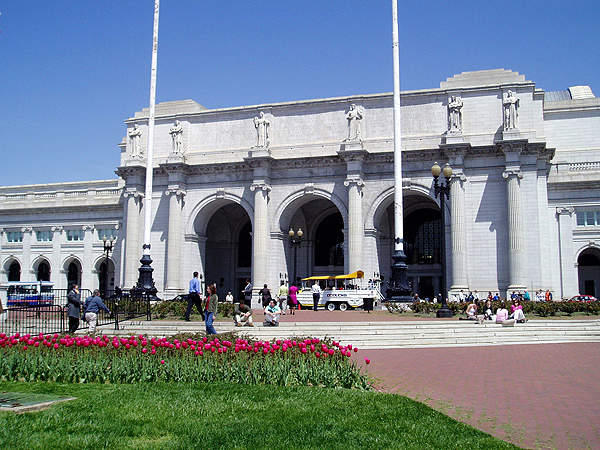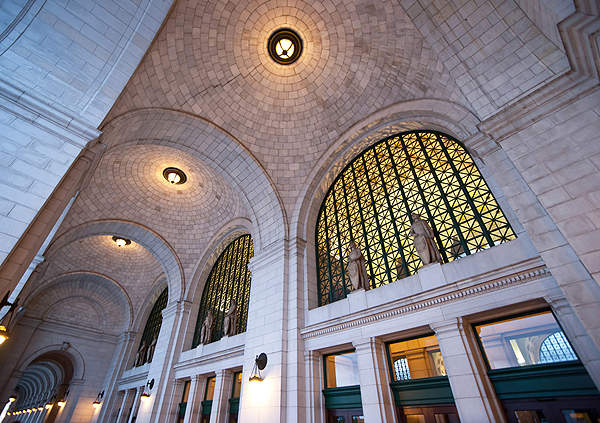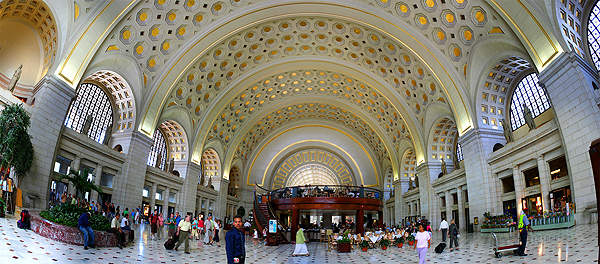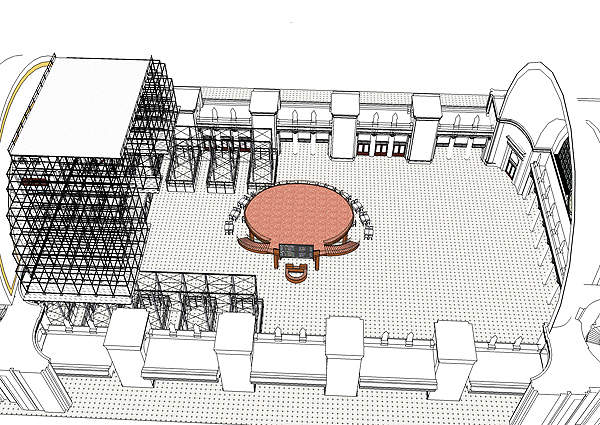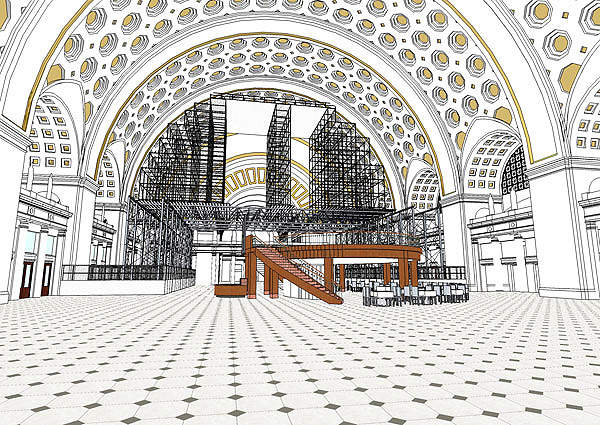Union Station in Washington DC, US, is a historic landmark and one of the largest railway stations in the world. It was officially opened more than 100 years ago, in October 1907, and completed in 1908.
The station was built with an investment of $25m. Nearly 32 million people, including commuters, tourists, office workers, shoppers and diners, visit the station annually.
History of the major American railway station
Union Station was built as part of a beautification project launched in 1901 for Washington DC. The project aimed at constructing facilities which are not only practical, but also fitting for a capital city.
Prior to the construction of the station, the Pennsylvania, Baltimore and Ohio railroad lines criss-crossed Washington DC. The three tracks were later consolidated into one. Union Station was proposed to be built as the location for consolidation of the three rail operations.
After opening, the 200-acre station became a thriving transportation hub in the region. It was declared a historical landmark in 1964. During peak operations, the station handled between 35,000 to 42,000 passengers and 229 trains each day.
Rail travel declined in the 1950s and 1960s and so did the usage of the station. To attract visitors, the station was designated as a National Visitor Centre in 1976. The centre included information booths, audio visual presentations, a bookstore and parking for tourists. It was, however, closed after five years as it failed to attract visitors.
Washington DC’s Union Station design, construction and architecture
The main architect, Daniel H. Burnham, adopted Beaux-Arts style architecture for the station. Design elements were inspired by the Baths of Caracalla and Arch of Diocletian, in Rome. The arches represent the station’s main role of serving as a gateway to the city.
The external part of the station is made of white granite. The station’s facade features columns, chiselled inscriptions and figures representing themes of fire, agriculture and mechanics. Each figure weighs nearly 25t. All woodwork within the station is made of solid mahogany.
A central archway styled similarly to Rome’s Arch of Constantine leads to the 120ft x 119ft main hall. The hall features a 96ft high barrel-vaulted ceiling decorated with gold leaf. Design of the Union Station served as the basis for other monumental buildings in Washington.
By the late 1970s, the station building started to deteriorate and was in danger of being demolished. To save the building, the Redevelopment Act of 1981 was enacted. A $160m restoration and revitalisation plan was undertaken for the station under the act.
The restoration plan aimed to transform the station into a modern transportation hub and commercial centre. It was carried out by a public-private partnership under which Amtrak contributed $70m, while Union Station Venture and the District of Columbia invested $40m each.
The project was the largest restoration project ever to have been undertaken in the US during that time. Groundbreaking for the project took place in August 1936. More than 2.5 acres of marble was used for restoration. It was executed by a team including LaSalle Partners, Williams Jackson Ewing and Benjamin Thompson & Associates Architects.
The renovated Union Station was officially opened in September 1988. It established the station as a popular tourist site, transportation hub and commercial destination.
Services and facilities included at the historic landmark and transport hub
Union Station is served by the Amtrak, Maryland Rail Commuter Service (MRCS), Virginia Railway Express (VRE) and Washington Metro Red lines. It serves as Amtrak’s headquarters, which occupies 100,000 square feet of office space in the station.
Amtrak train services include high-speed trains (Acela Express and Northeast Regional) and passenger trains (Cardinal / Hoosier State, Capitol Limited, Crescent, Carolinian / Piedmont, Silver Service / Palmetto and Vermonter). The trains serve Washington, Boston, New York and other cities.
MRCS’s routes include Maryland, Washington DC and West Virginia. The routes served by VRE include Washington DC and Northern Virginia.
The station includes a multitiered parking garage with 2,194 parking spaces. The elevators and escalators in the garage connect to the retail area, restaurants and platforms.
A bus deck provides parking facilities for tour and charter buses. Parking for recreational vehicles and motor coaches is also available. An electric charging station includes one charging unit for all electric vehicles. The 210,000 square feet of retail space features a number of restaurants, cafes and cinema screens.
Multimillion dollar future developments at Union Station in Washington DC
In 2009, a master plan was adopted for improving the life of the station. It aims to streamline the passenger pathways, increase safety of passengers and improve the overall aesthetics of the station.
As part of the project, the existing rail concourse will be upgraded to include waiting areas, restrooms and lounges at a cost of $30m. The Center Cafe located in the middle of the main hall will be removed as the cafe obstructs passenger views and is a bottleneck in passenger movement.
In August 2011, an earthquake hit Washington, damaging the main hall and concourse of the station building. A project to repair and modernise the main hall and construction of a new concourse is currently ongoing, at a cost of $40m. The new concourse will provide lower level track access by adding escalators. Completion of the project is scheduled for 2012.
Other modernisation projects include the construction of a new terminal for intercity buses. Rail services will be integrated with bus services to improve connectivity. The new terminal will connect with the Metrorail entrance and include restrooms. It is being built at a cost of $40m. Upgrading the H Street Overpass is also part of the master plan, requiring an investment of $40m.


